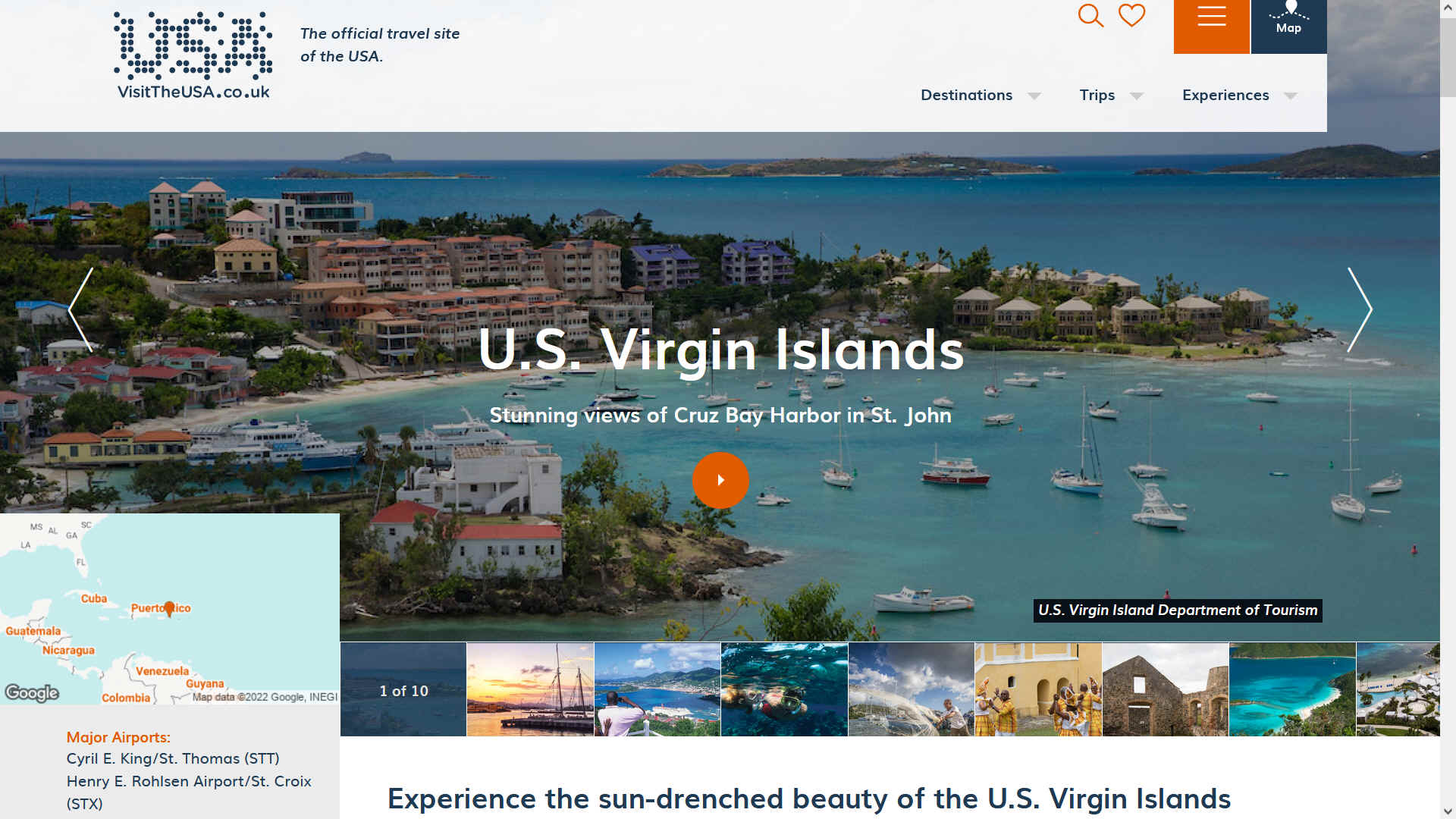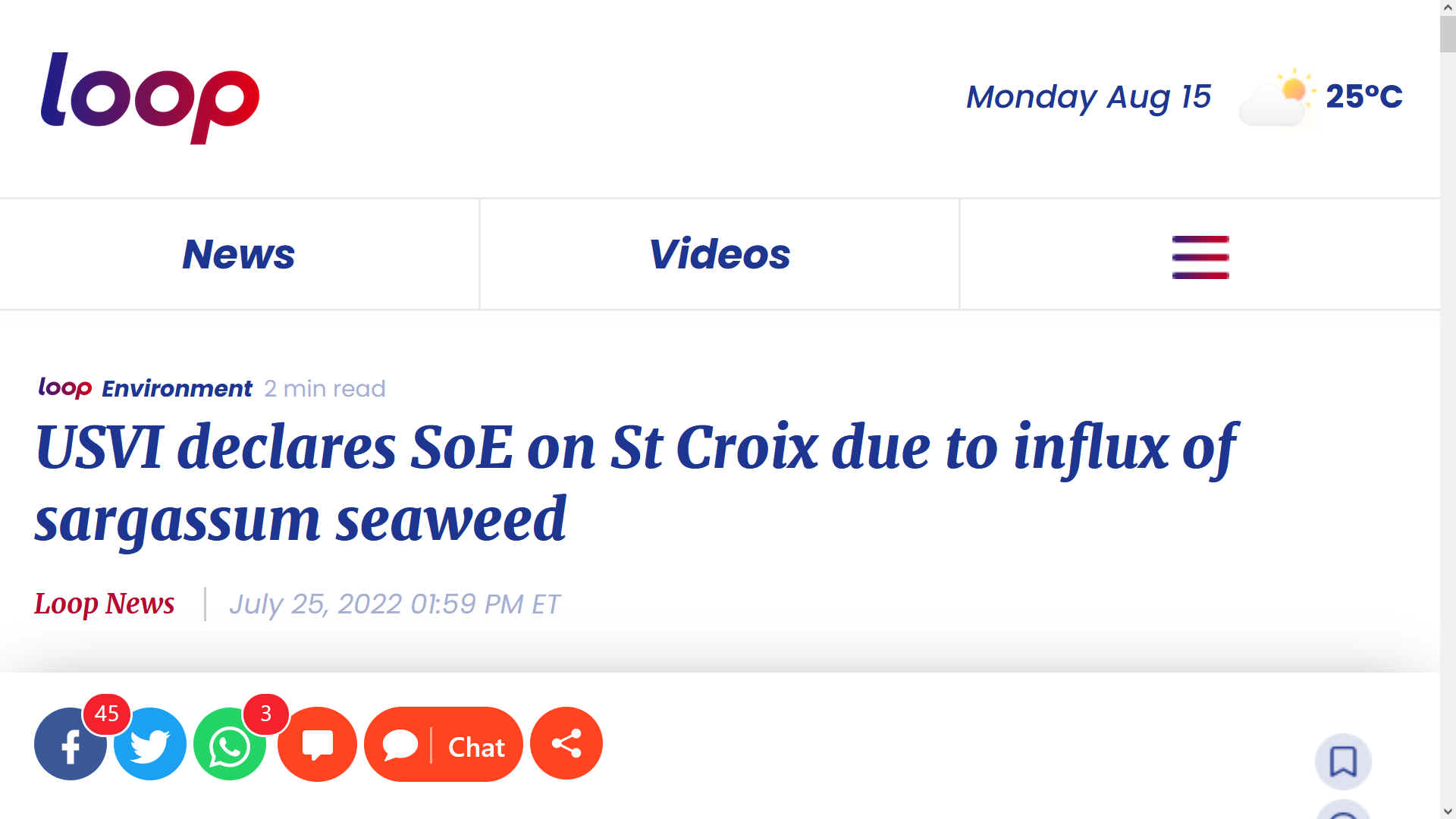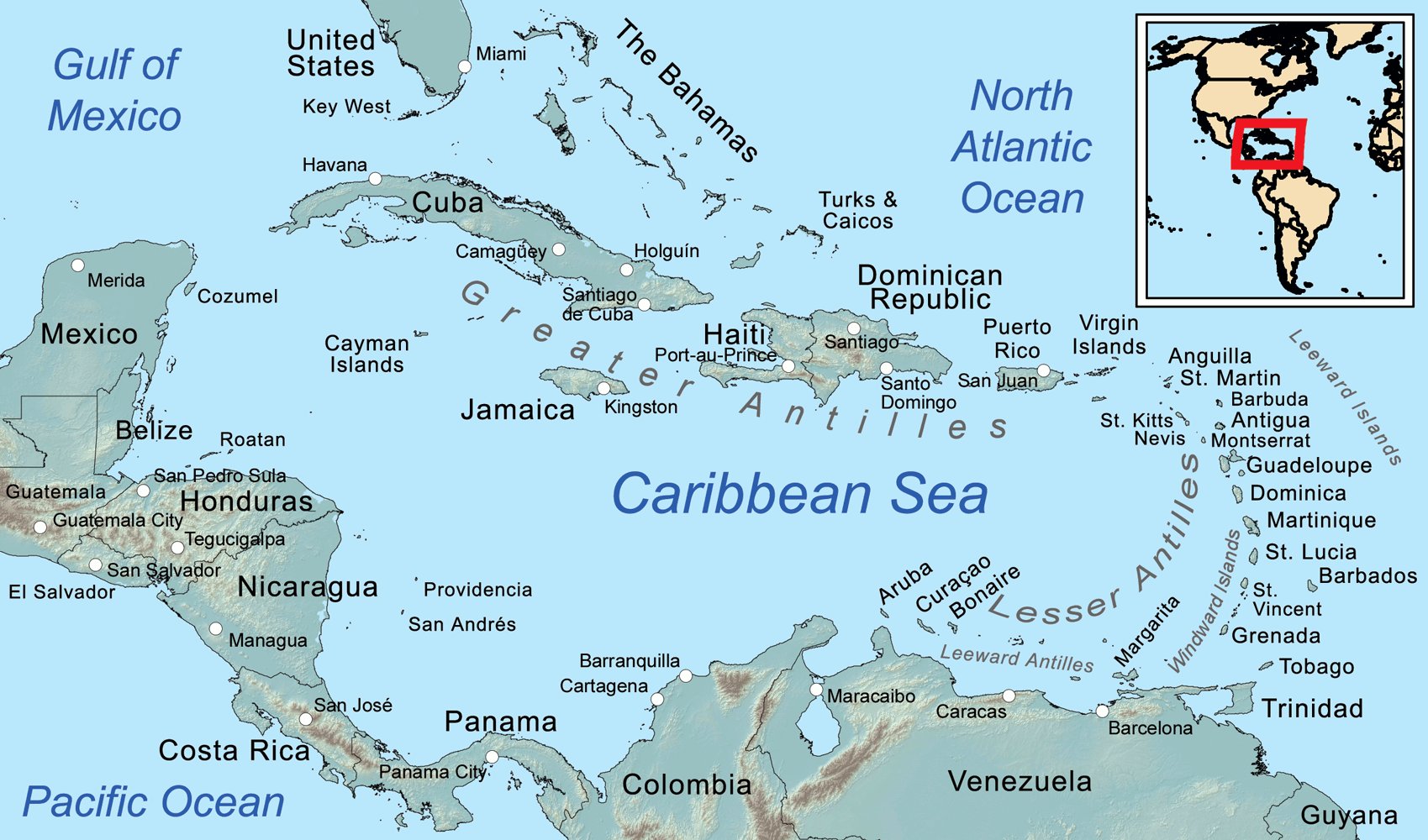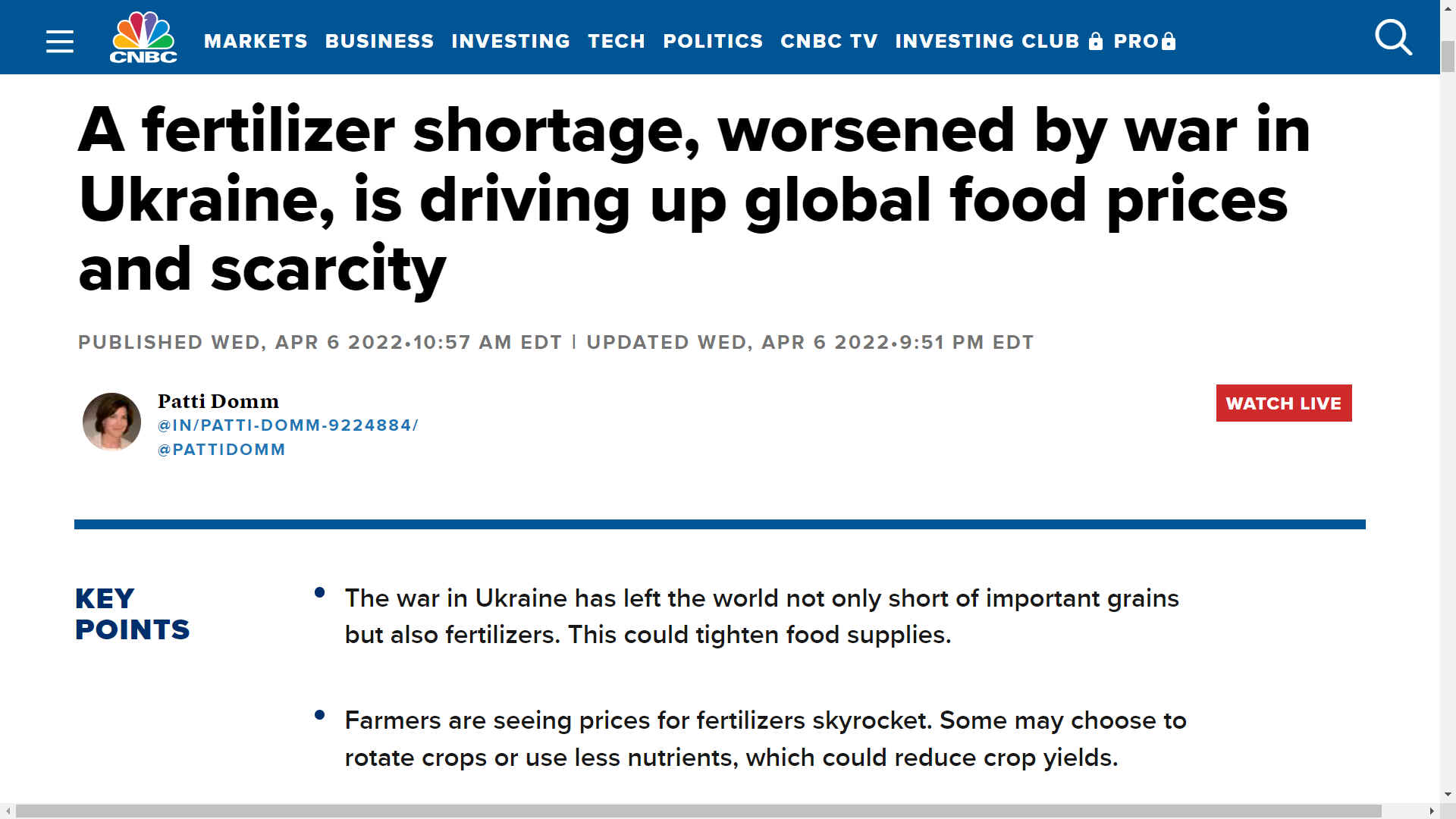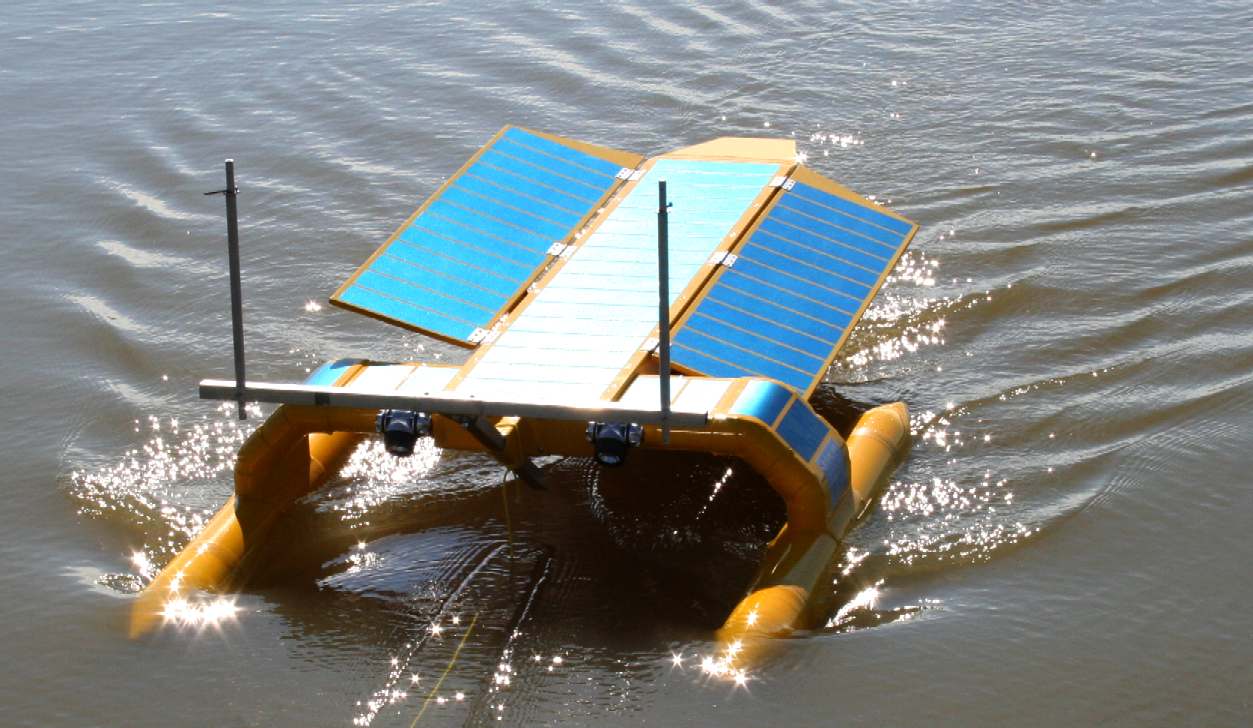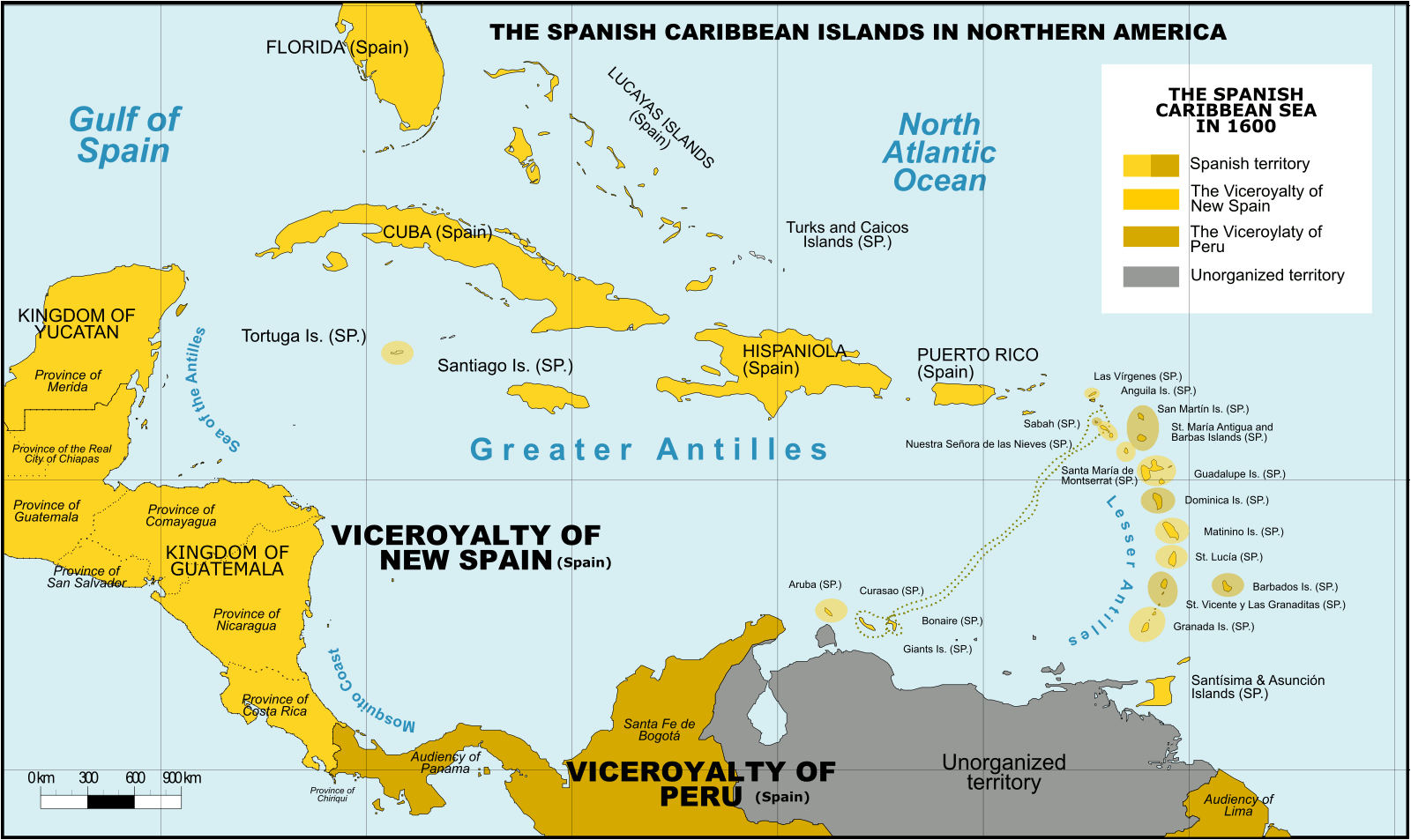|
U S V I R G I N I S L A N D S
|
|
|
|
Between the
Atlantic Ocean and the Caribbean Sea, you’ll find four dynamic islands with bustling historic districts, vibrant cultures, sumptuous dishes and sprawling beaches known for their emerald waters and bright
coral
sand, until the plague seaweed, known as sargassum entered centre stage. A territory of the
United States since 1917, the U.S. Virgin Islands comprises four principal islands – St. Croix , St. John, St. Thomas and Water Island – plus 50 smaller islands, cays and islets that are part of the Caribbean archipelago.
Ironically, the U.S. Virgin Islands is thought to be a leader in sustainable tourism with a commitment to protecting and preserving its natural environment and cultural heritage.
Thus, the influx of macro algae, sends anything but this message to holiday
makers, who mostly understand that algal blooms are the result of global
warming, linked to an ocean pollute with fertilizer run off from land.
Descend beneath the ocean’s depths and explore a shipwreck, wall, pier, shore and reef all in one day. Whether you're a newly certified diver or a more advanced one, there is much to see in the pristine waters, with more than 500 species of fish, 40 types of coral and hundreds of invertebrates inhabiting the sea. Lush landscapes and awe-inspiring vistas provide a breathtaking backdrop for land excursions as well. Horseback ride along the coast, take a captivating eco-tour, or hike and bike across diverse terrain.
USVI declares State of emergency on Saint Croix due to influx of sargassum seaweed
CARIBBEAN LOOP NEWS JULY 25 - USVI DECLARES SOE ON ST CROIX DUE TO INFLUX OF SARGASSUM SEAWEED
Map of the Caribbean Sea, showing the Greater, Lesser, and Leeward Antilles, the Leeward and Windward Islands.
THE CARIBBEAN ISLANDS BY POPULATION
Cuba 11,252,999
US
Virgin Islands 87,000
Tortuga 25,936 Roatán 110,000
SARGASSUM: Represents an immediate threat to the economics of the Caribbean Islands, the Gulf of Mexico, and African West Coast, but is also a potential asset if it can be economically harvested and used for, among other things, fertilizer for agriculture: where there is a world shortage.
BIOMASS - BUILDING MATERIALS - CANCER TREATMENTS - CLOTHING & SHOES - CO2 SEQUESTRATION - COSMETICS FERTILIZERS - FOODS - MEDICINES - MINERALS - PACKAGING - SUPPLEMENTS - VITAMINS
FOOD
SECURITY: RAMPANT FERTILIZER INFLATION - Officials at the United Nations and beyond are stepping up warnings about the mounting crisis for fertilizers — an essential substance to boost soil fertility — as vulnerable countries in areas such as Africa grapple with prices that have soared by 300 percent since Russia's war in Ukraine began.
In 2021, Russia was the world’s top exporter of nitrogen fertilizers and the second-largest supplier of both potassic and phosphorous fertilizers, according to the
U.N. Food and Agriculture
Organization.
Russia and Belarus had provided about 40% of the world’s exports of potash. Russia also exported 11% of the world’s urea, and 48% of the ammonium nitrate. Russia and Ukraine together export 28% of fertilizers made from nitrogen and phosphorous, as well as potassium according to Morgan Stanley.
MARINE COMBINED HARVESTER - The basic SeaVax machine is seen here as a proof of concept (working model). It was designed to filter macro & micro plastics from seawater - in bulk, and recover ghost fishing nets of up to 150 tons. It was to be solar and wind powered when conceived in 2015. Today, the vessel would need more power if a fleet of them are to deal with something like 24 million tons of sargassum a year. Around triple the 8 million ton capacity envisaged for marine litter. Any revised specification would probably need to include renewable hydrogen in the energy equation, something akin to the Elizabeth Swann concept, potentially the world' fastest hydrogen powered ship.
Hence, ammonia, hydrogen, and methanol bunkering is a prerequisite. Solar power alone will not cut the mustard with such volumes. The other hurdle to overcome is unit cost. A beach launch and recovery system has been designed and tested at 1:20 scale. But this is not essential, where harbours or marinas are extant. Indeed, So long as each catch requiring further processing, may be offloaded. The price per unit is the next hurdle to overcome. It is difficult to know how to pitch this one, because each island will (presumably) have different volume requirements. That said, we should be aiming to equal the cost of cleaning their beaches in one year. So that once the CAPEX is sorted, follow on years will only be the administrative and operating costs. We are assuming that the cost of beach cleaning for a whole island in any one year is around $20 million dollars. Clearly, a full-size, ocean cleaning machine will be far more. But a half size unit may come in somewhere in that region.
We imagine that every Caribbean island would want to own one of these, even if capable of operating in fleet formation. Individual operators might take charge of their own beaches, with advance information of sargassum landings from SAT detection, to guide them. The SeaVax-Sargassso™ not only harvests the macro-algae, but pre processes the haul. Depending on what the seaweed is intended for. When used with AmphiMax-Sargasso™ amphibious beach launchers, islands do not need dedicated harbour facilities. The system can operate from any beach.
The Caribbean Sea is littered with shipwrecks and dotted with dozens of paradise islands, where pirates are said to have buried their treasure. Many island nations are at risk as to rising sea levels, caused by climate change, with the United Nations powerless to deal with global warming, being dependent on fossil fuels. The area has some of the most interesting World Atlas locations on Planet Earth.
Spanish Caribbean Islands 1600 Spanish Overseas territories Northern America Turks and Caicos Is
ATLANTIS - MEDITERRANEAN SEA ATLIT-YAM - ISRAEL PAVLOPETRI
- GREECE RUNGHOLT
- DENMARK YONAGUNI JIMA - JAPAN
ISLAND NATIONS UNDER THREAT OF SINKING
Cabo Verde, Republic of Marshall Islands, Republic of the Micronesia, Federated States of
STUDIO/AGENTS: A draft script for Kulo-Luna is available on request. Cleopatra The Mummy is currently under development
|
|
Please use our INDEX to navigate this site or return HOME
This website is Copyright © 2024 Cleaner Ocean Foundation & Jameson Hunter - All rights reserved
|
